NOTE: Taylor Park is on the northeast side of Oak Park, Illinois. This post was originally published on the Northeast Oak Park Community Facebook group, on February 19, 2021.
+ + + + + + +
Most year-in-review posts are written in December or early January. But, after a couple of rough weeks of winter, now seems like a good time to review the birds I saw in Taylor Park during 2020. It’s fun to recall the many beautiful birds I saw there last year, but it’s even more fun to anticipate the many birds I hope to see in the park once spring migration begins in a few weeks.
Birdwatchers recorded 67 species of birds on the Taylor Park’s eBird page during 2020. Six kinds of birds were spotted in the park for the first time that year: Red-shoulder Hawk, Sora, Eastern Kingbird, Willow Flycatcher, Philadelphia Vireo, and Canada Warbler. That brought the park’s all-time species list to 108 species!
The year started slowly. Most days I visited during January had only a couple of species, like House Sparrow, Northern Cardinal, or American Robin. But the park had one special visitor during January, and bird life started picking up in late February and March.
Scroll down through this page to see birds that visited, nested, or just plain hung out in Taylor Park during 2020.
+ + + + + + + +
Here’s the special visitor to Taylor Park from January 2020. Yellow-bellied Sapsuckers are woodpeckers that drill shallow holes in tree bark to tap the tree’s sap supply. I guess sap was already running in late January, because I found this Yellow-bellied Sapsucker on January 22nd. The ice frozen to the bark is sap from holes higher on the trunk.
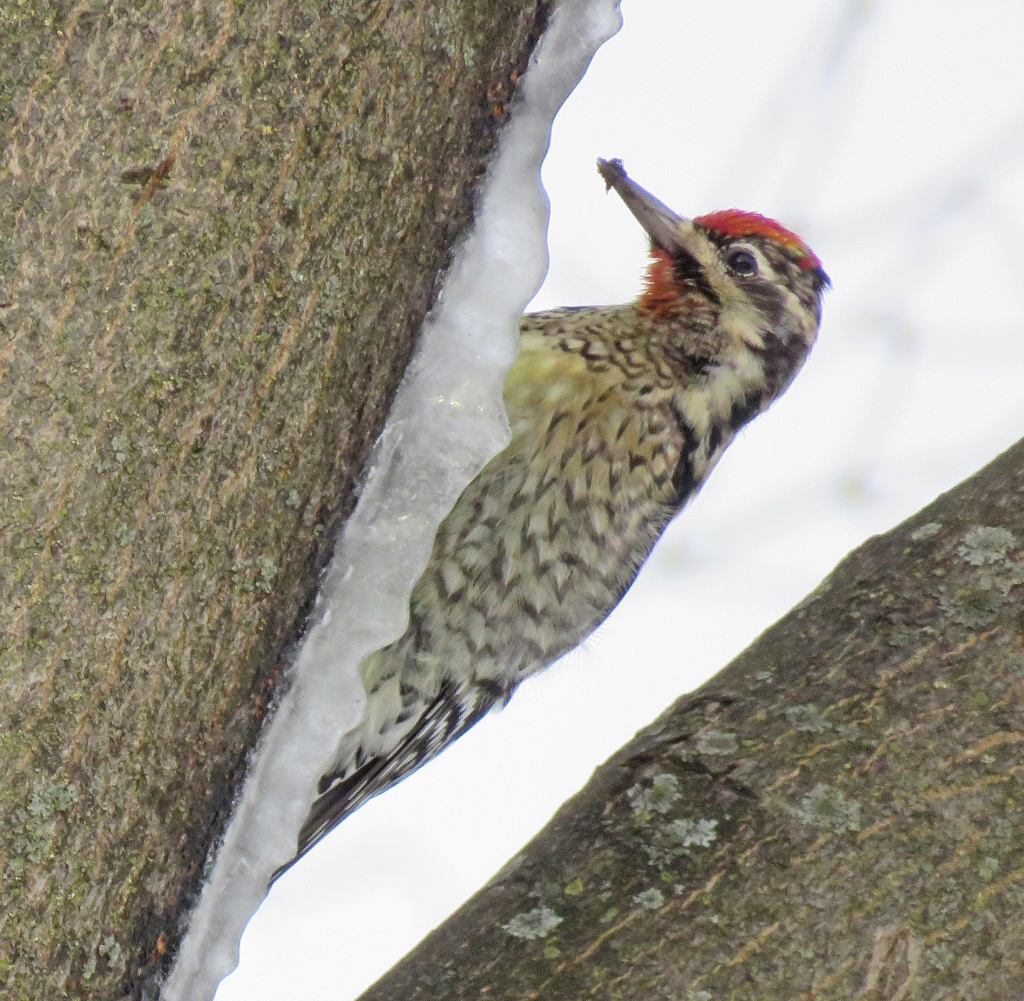
Here’s a closer look at some freshly drilled sapsucker holes.
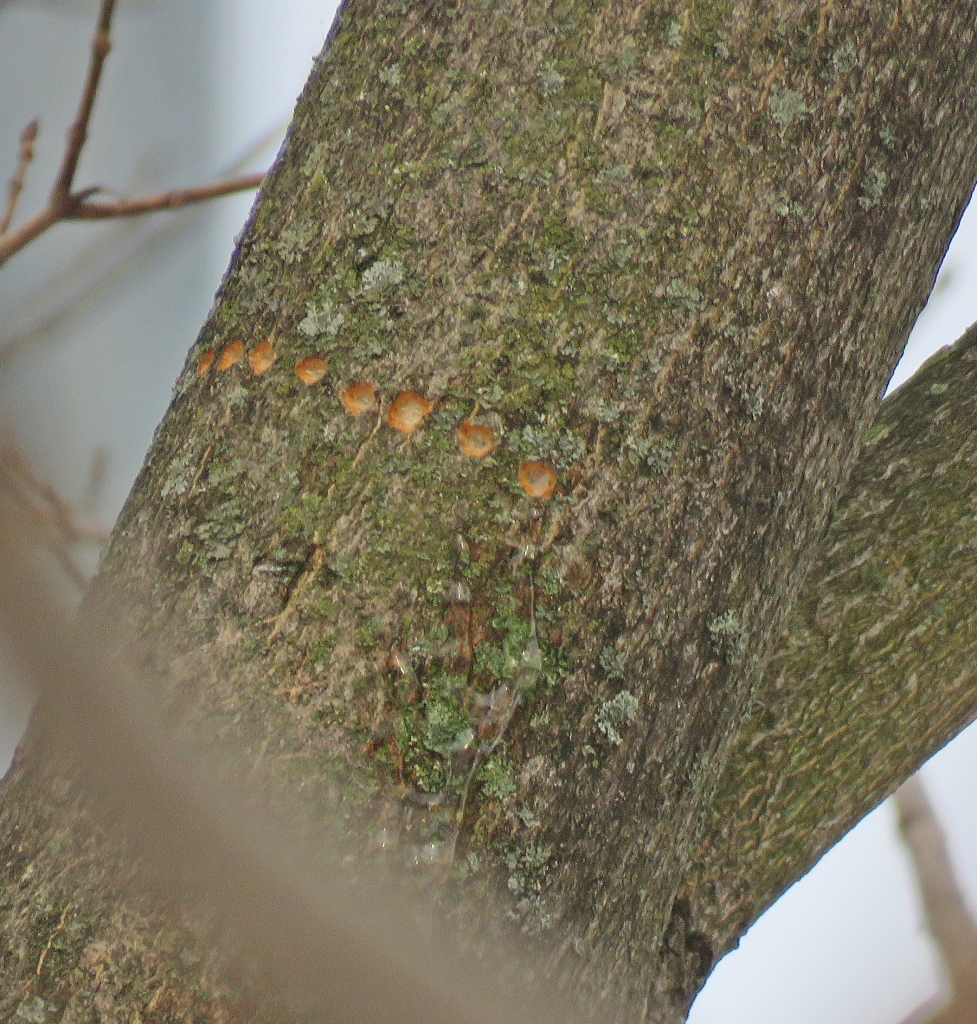
At least a few American Robins spent the winter in the Taylor Park neighborhood. As of late February, the local robins could still find a little dried fruit in the trees by the tennis courts. (photographed on February 19, 2020)

Some Mourning Doves also spent the winter in the Taylor Park neighborhood. They probably ate seed from backyard bird feeders, and they sometimes perched in the park to soak up some sun.
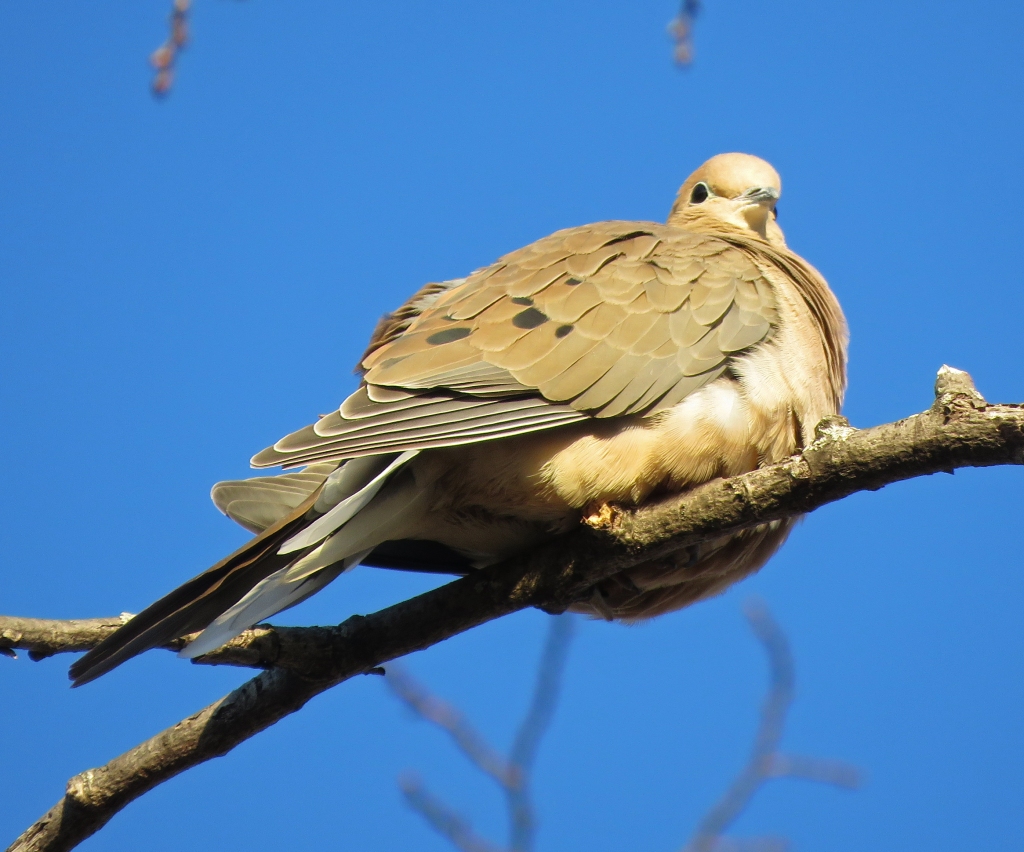
Male Red-winged Blackbirds arrived at Taylor Park in early March and immediately started singing to claim their nesting territories.

By mid March, Mallards were hanging out in the Taylor Park wetlands. I heard rumors that Mallards nested somewhere in the neighborhood, but I never saw their ducklings.
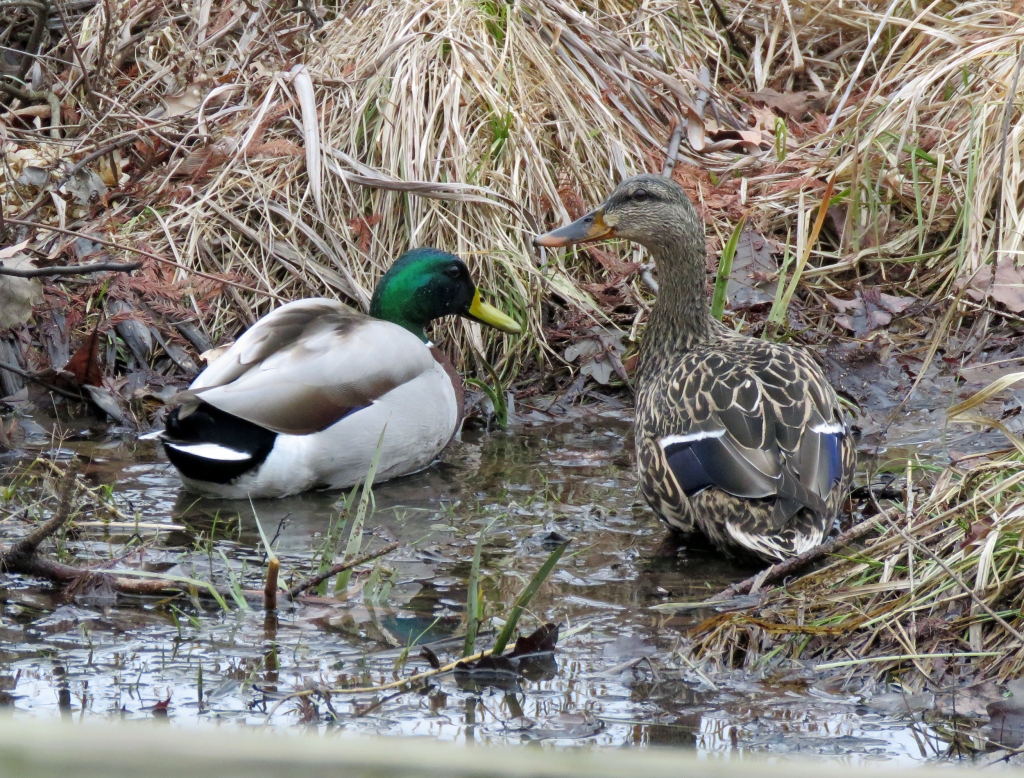
Once American Robin’s spring migration began, Taylor Park’s robin counts increased from three robins on March 3rd to 75 robins on April 2nd. The robins also switched their diets, from the sparse fruit remaining on the crab apple and hawthorn trees to worms yanked out of soccer field turf.

Sparrow migration also began in March and continued into May. This Song Sparrow was hanging out in the fenced wetland in late March. I keep hoping Song Sparrows will stick around and nest in Taylor Park, but so far, no luck with that. Maybe we need more meadow habitat.

Migrating Swamp Sparrows found the park’s marshy wetland habitat in April. I found eight Swamp Sparrows on April 24th, and at least one stayed until May 11th before heading north to nest.

Ruby-crowned Kinglets and their Golden-crowned cousins were some of the first insect-eating migrants to explore the park’s trees during mid April.

By late April, some American Robins were already building nests in Taylor Park.

A Mourning Dove was also building a nest in Taylor Park in early May.
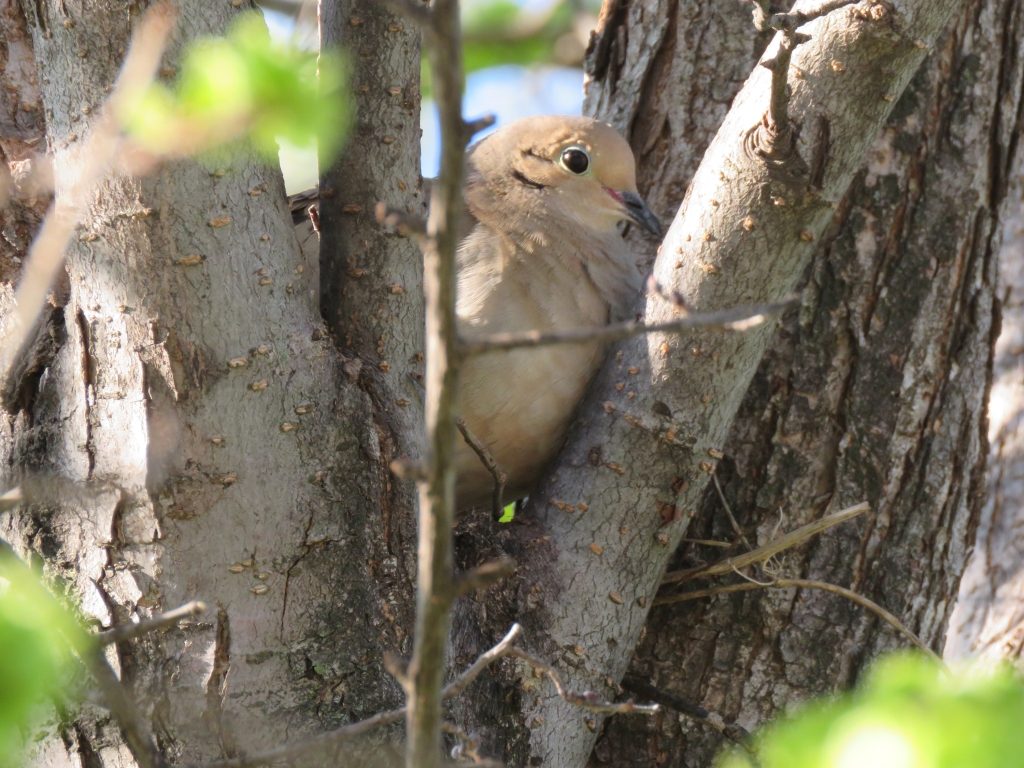
At least two Chipping Sparrow pairs claimed nesting territories in the park during spring 2020, but I never found their nests.
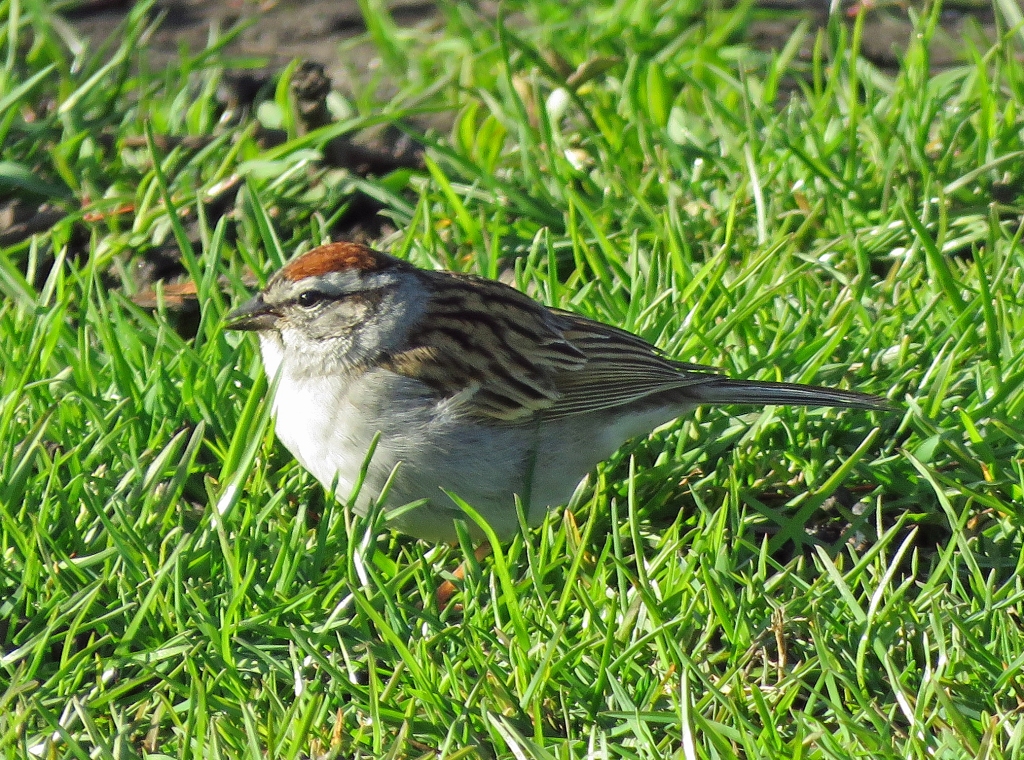
Female Red-winged Blackbirds had joined their male mates by late April, so their nesting season was underway by early May. This female Red-winged Blackbirds was hunting for insects on the park lawn, perhaps to feed her newly hatched nestlings.
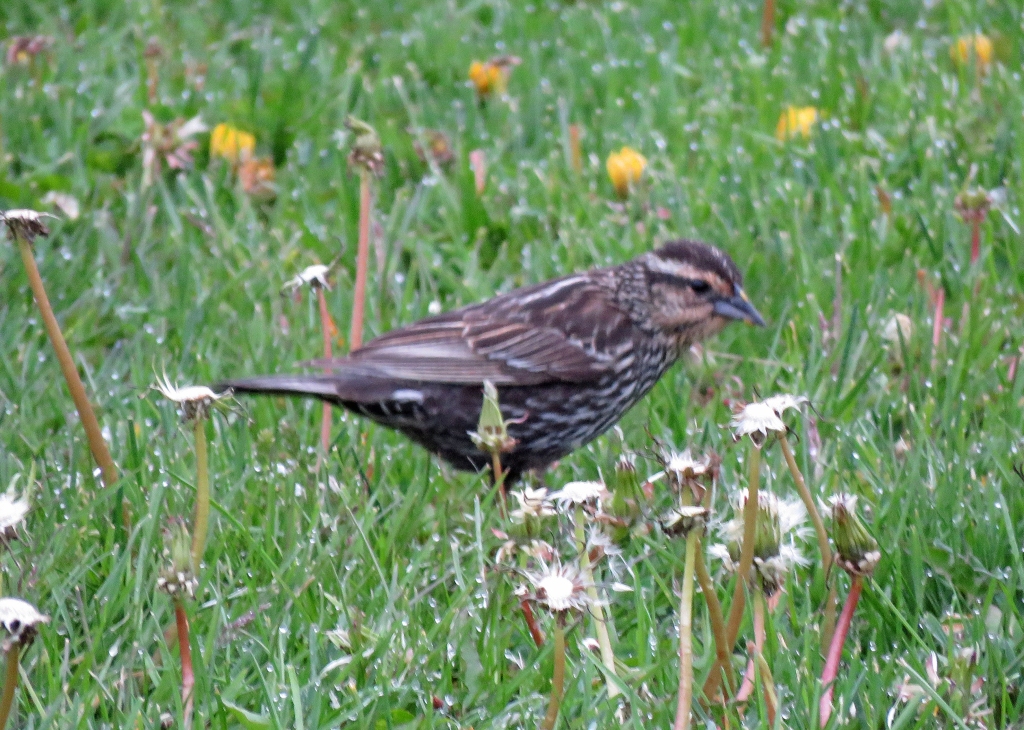
While a few bird species had started nesting in the park by early May, other species, like this male Rose-breasted just stopped by for a meal before continuing their spring migration.

May was peak migration time for warblers. This Magnolia Warbler was one of seven warbler species I spotted in Taylor Park during May 2020.

The Taylor Park wetlands also attracted birds during May, including the Solitary Sandpiper lurking behind the out-of-focus Mallard’s head.
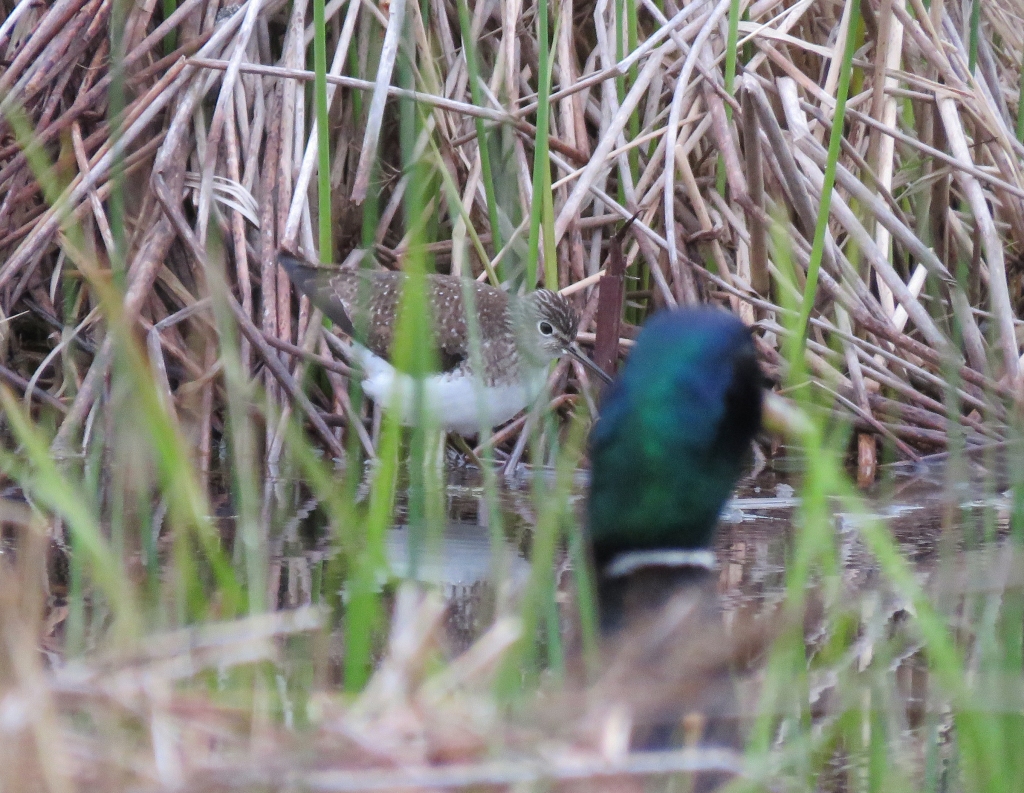
The Taylor Park wetlands were a stop-over for the park’s first-ever Sora during May migration. Sora are a kind of rail, a secretive group of marsh birds. Another Sora stopped by the wetlands during fall migration.
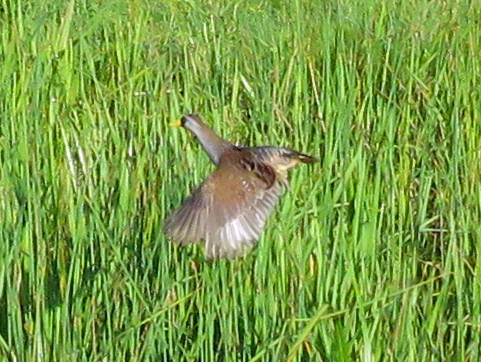
All the birds in Taylor Park attracted the attentions of this adult Cooper’s Hawk. At least one pair of Cooper’s Hawks nested elsewhere in northeast Oak Park.
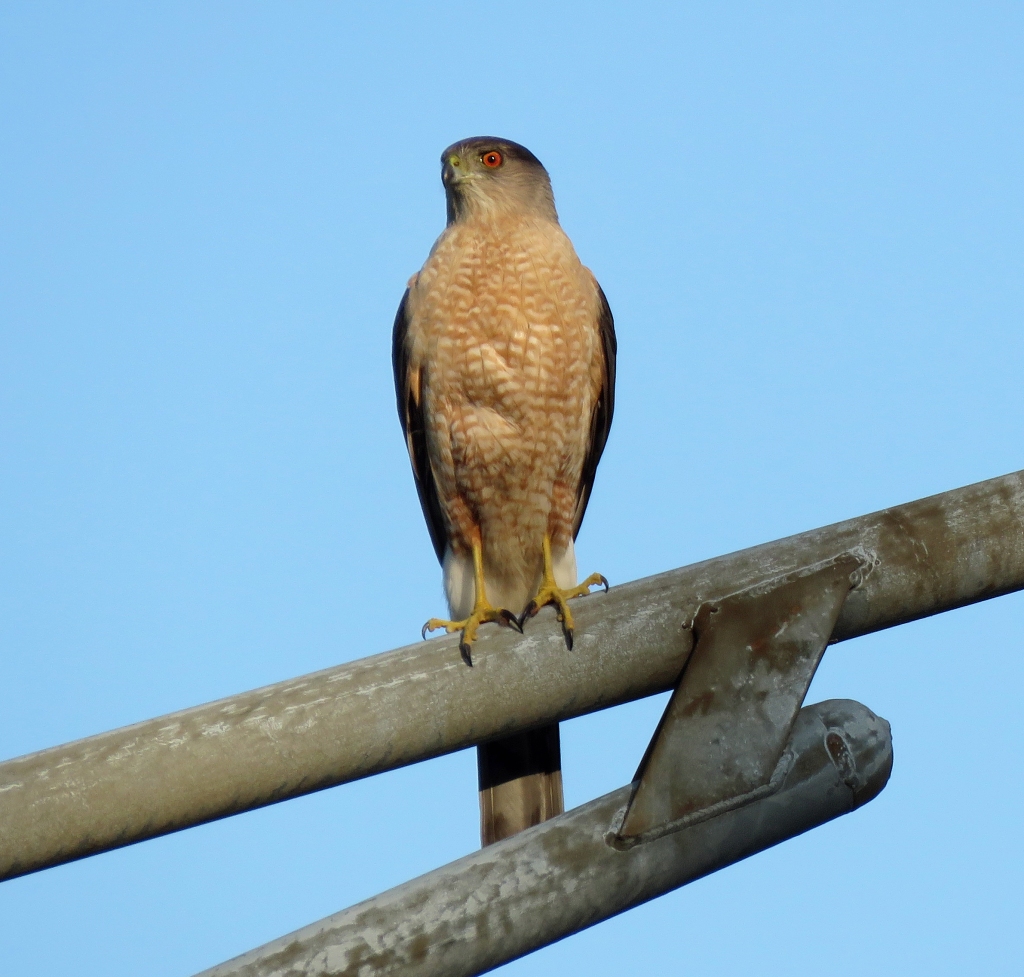
Many of the Cedar Waxwings seen in Taylor Park during May were migrating through, but some years they also nest in or near the park.
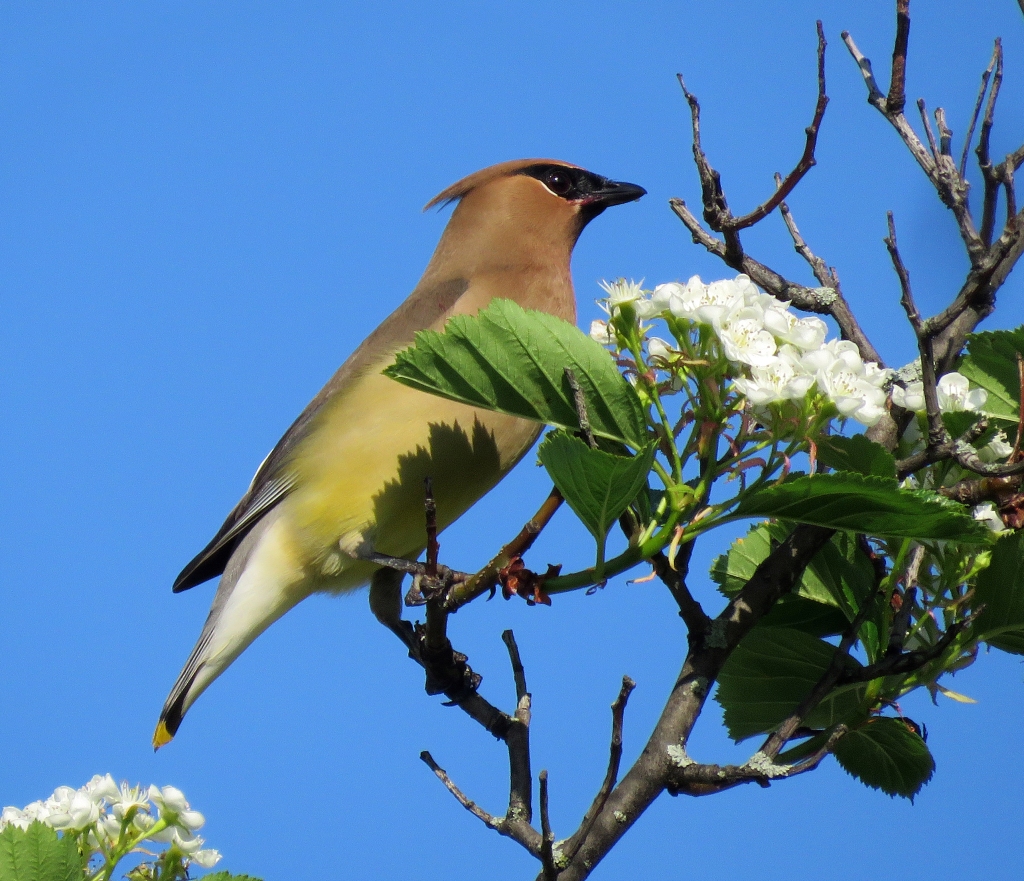
When I found this male Baltimore Oriole during mid May, I assumed he was just stopping over for a meal during migration.
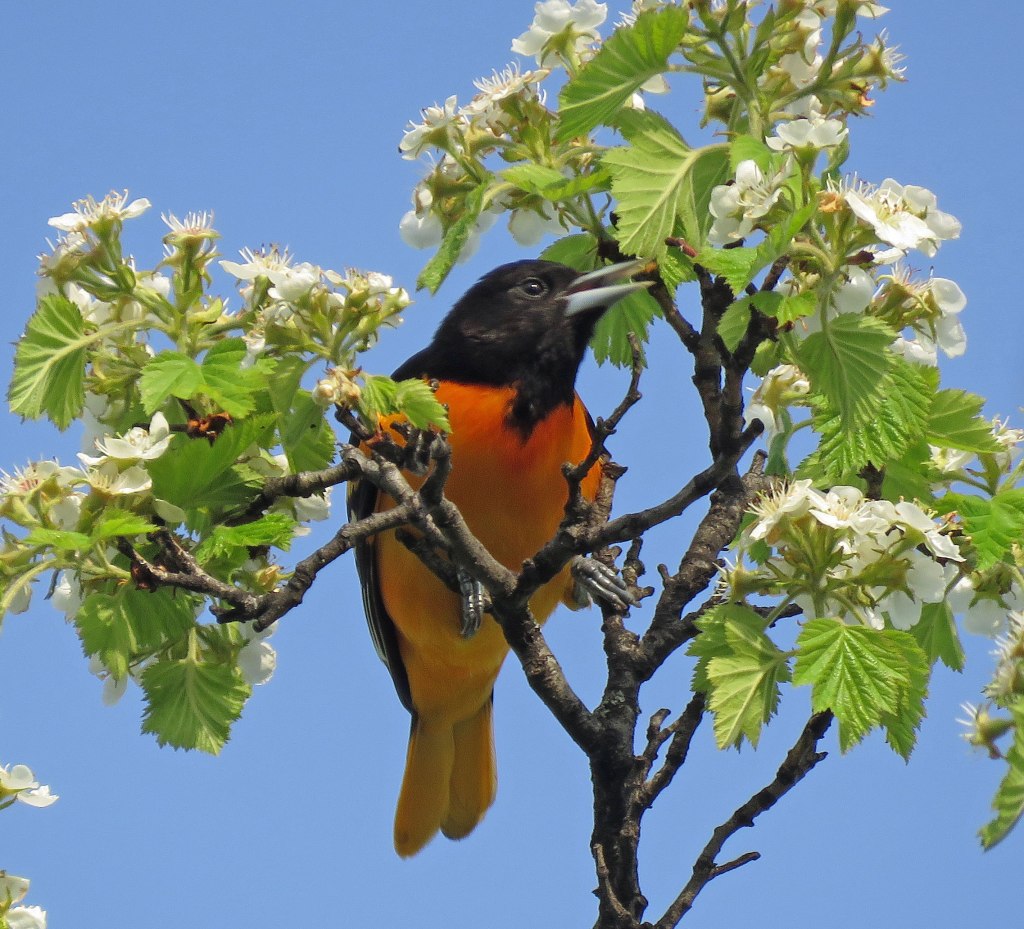
Then, on June 20th, I saw a Baltimore Oriole flying to its nest high in an elm tree in the northeast corner of Taylor Park.
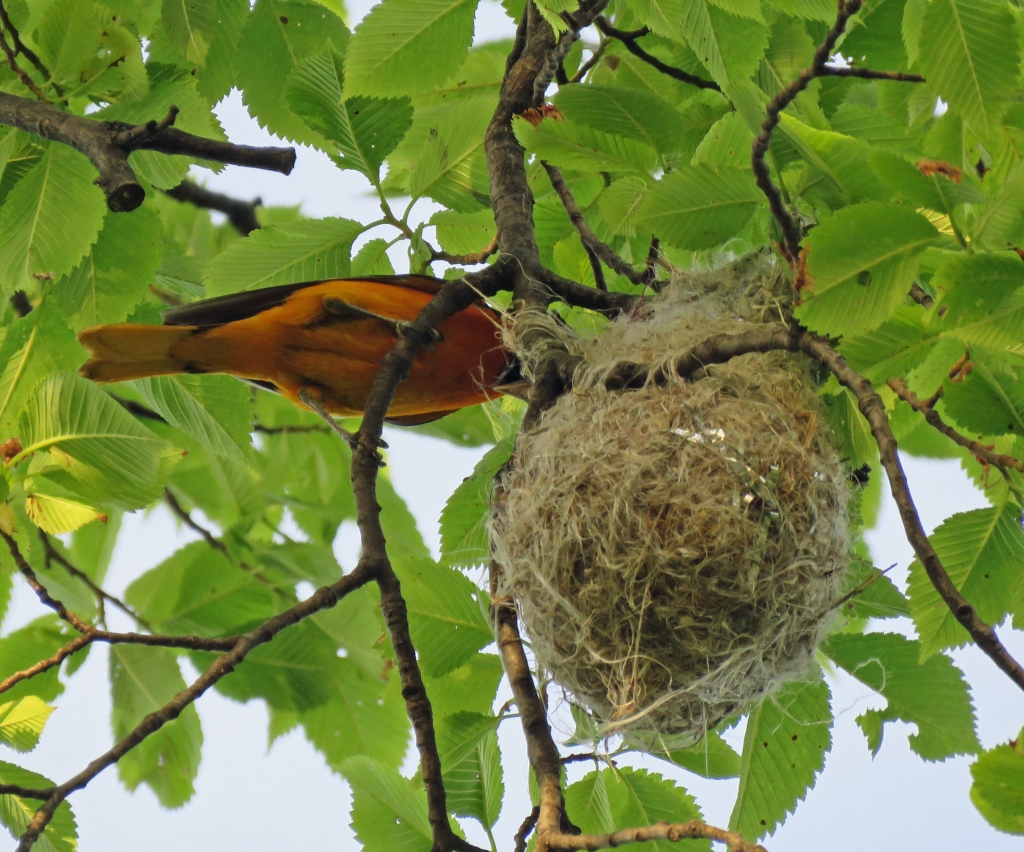
The next time the oriole approached its nest, it had a beak full of bugs to feed its babies.
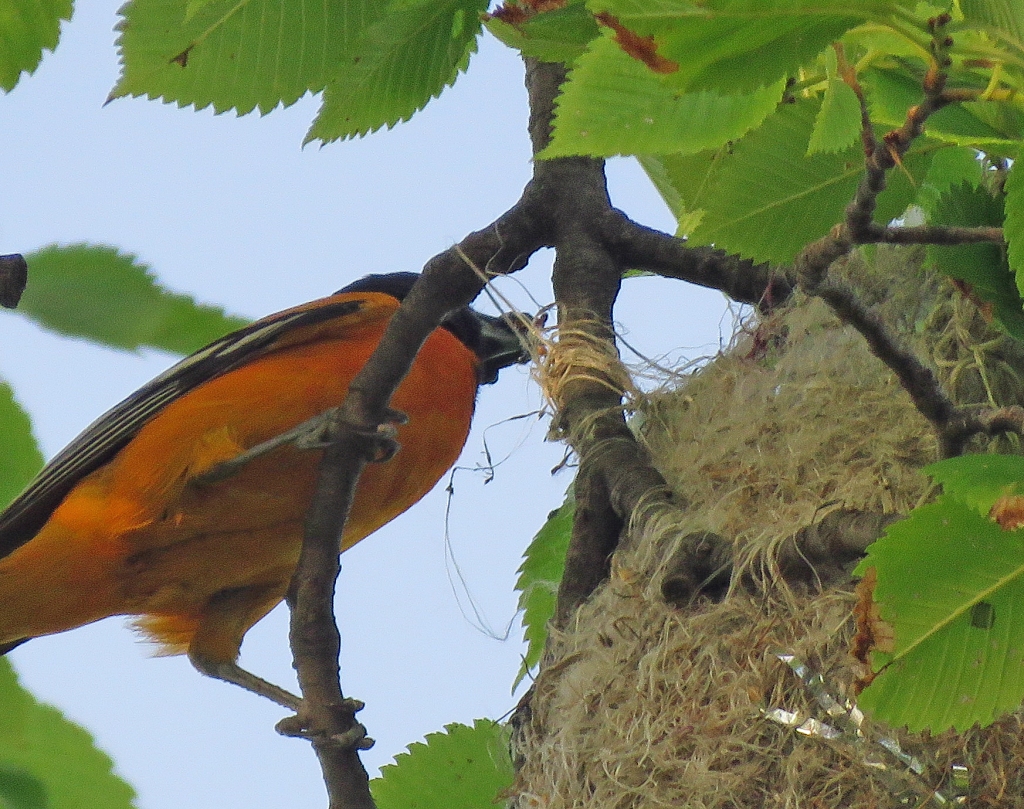
Then I noticed that a fledgling Baltimore Oriole had already left the nest! This was my first-ever oriole nest in Oak Park. Baltimore Orioles often nest in Chicago parks with large lagoons. I guess the small Taylor Park wetlands, plus the insects living in the park’s native trees, were enough to support at least one oriole family.

When I saw the Taylor Park’s first-ever Eastern Kingbird. I assumed it was just another stop-over migrant. Then, all through June and July, I kept hearing kingbird calls and seeing adult kingbirds flying between treetops.
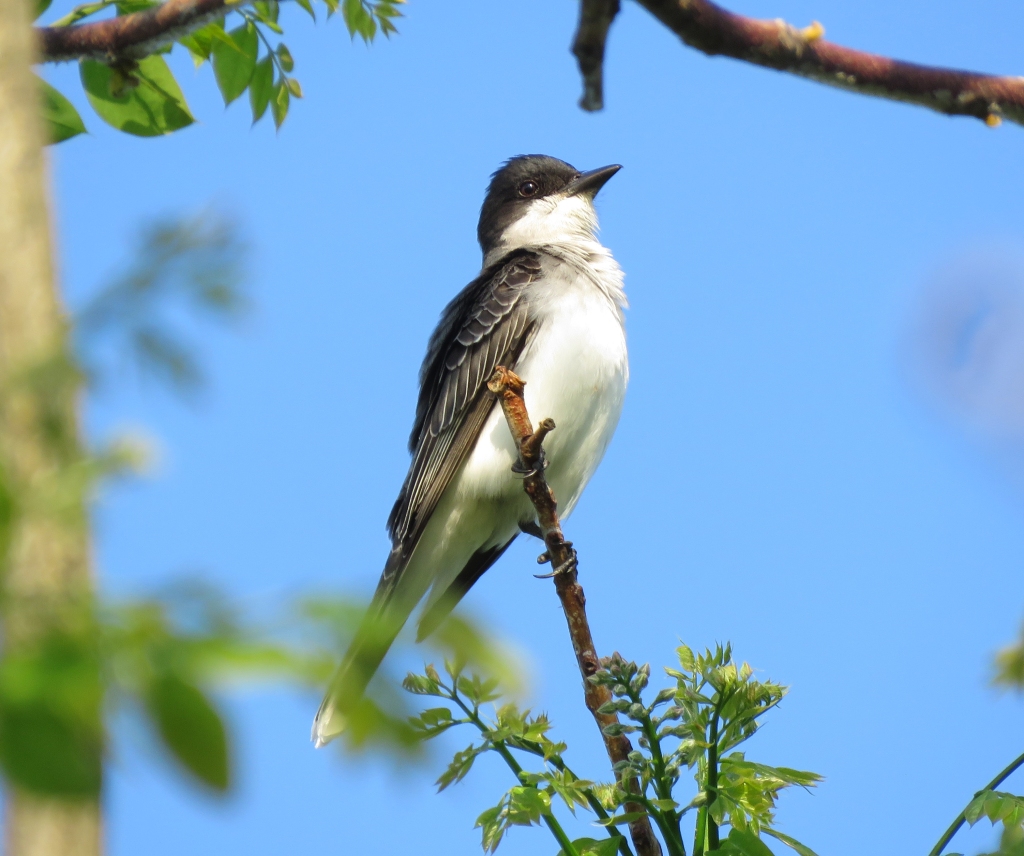
Finally, on the last day of July, I saw a kingbird parent feeding an insect to a fledgling kingbird. I never found the kingbird nest, but it was probably somewhere in the park or in a neighbor’s yard.
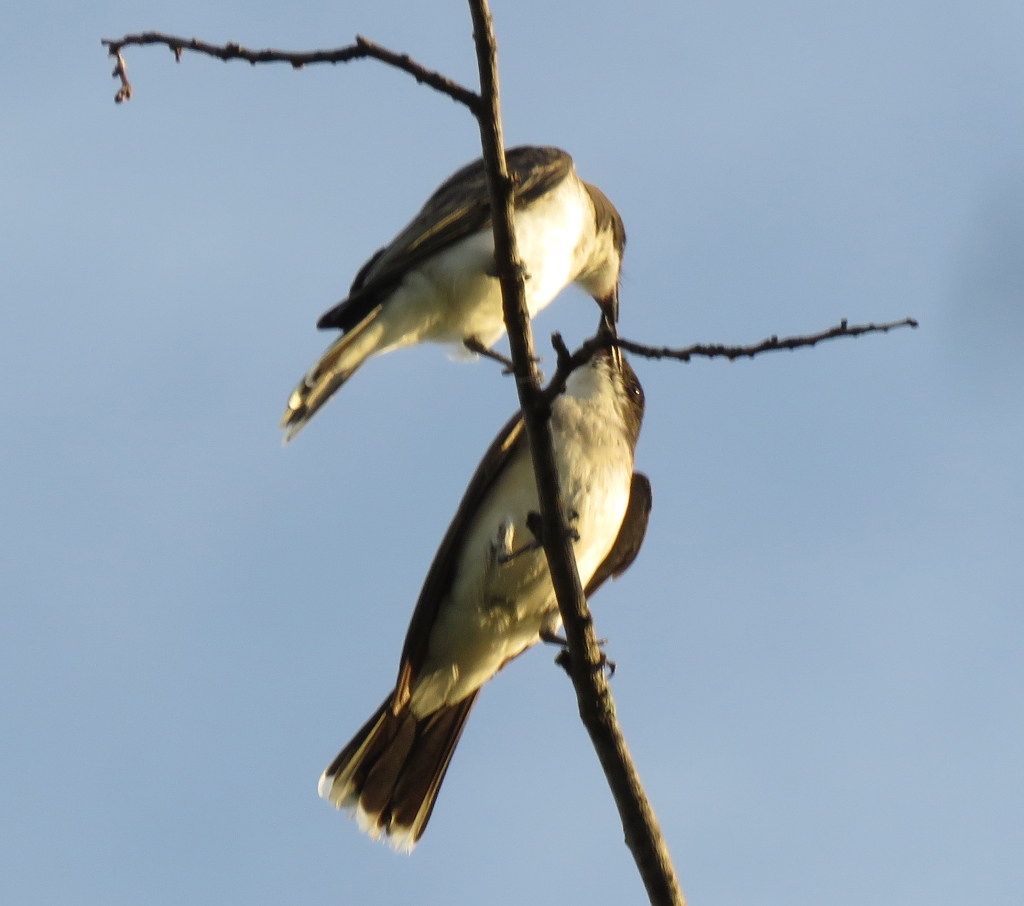
Speaking of bird food, remember the Periodical Cicadas that emerged in early June?
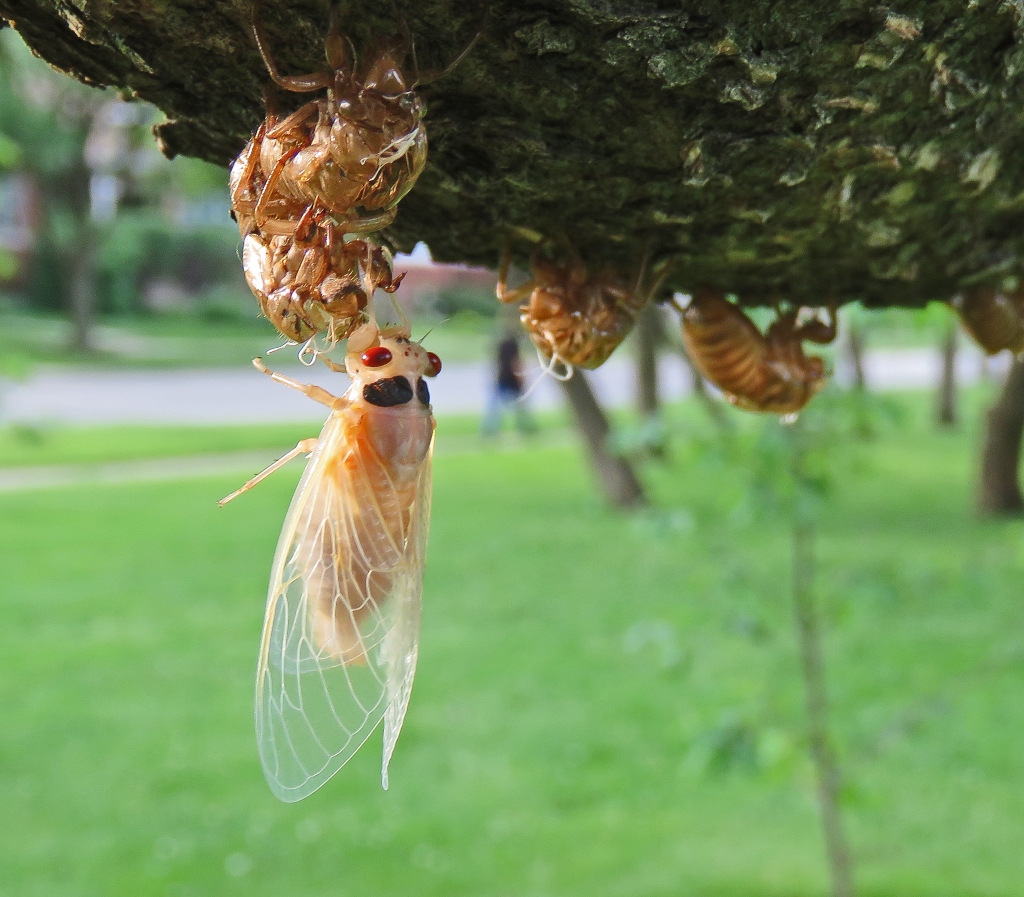
Cicadas and other insects were good food for fledgling Red-winged Blackbirds and many other bird species.

American Goldfinches don’t nest until thistle seeds ripen in mid to late summer. This male goldfinch was singing in Taylor Park in early August, so it may have had a nest nearby.
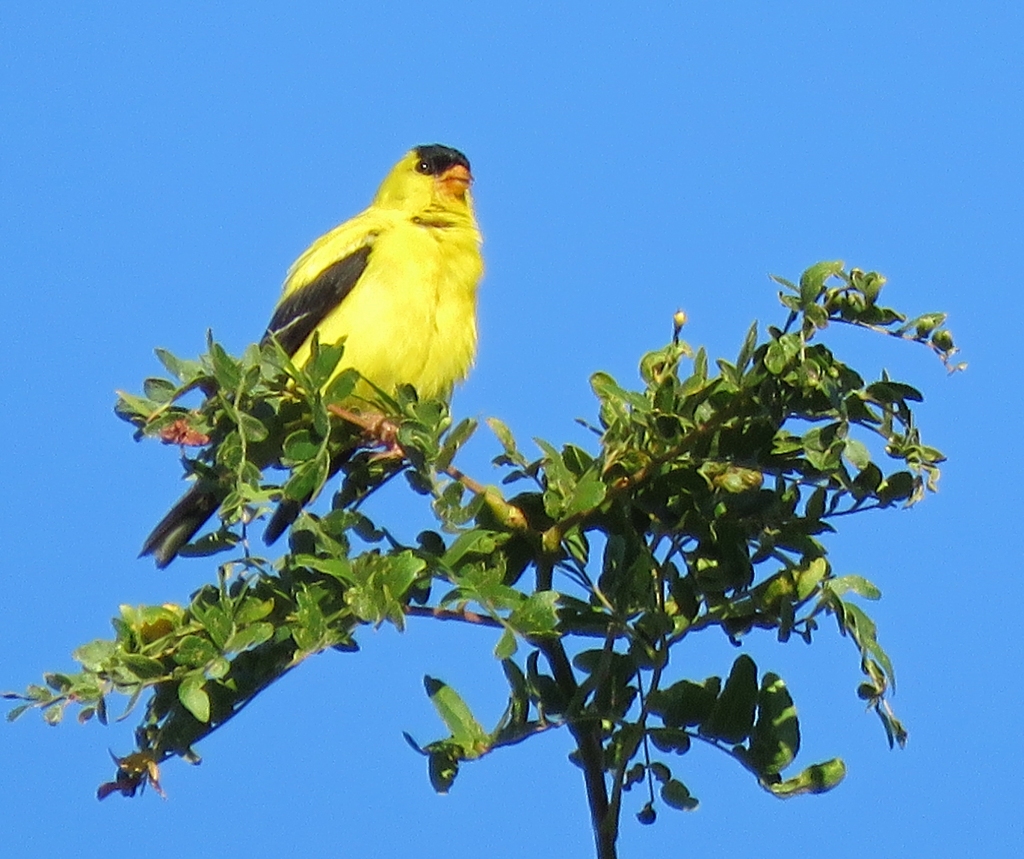
September was a slow month for birds in Taylor Park, but things started picking up once hawthorn and crab apple fruits ripened. These House Finches were enjoying ripe fruit in the northwest corner of the park in early October.
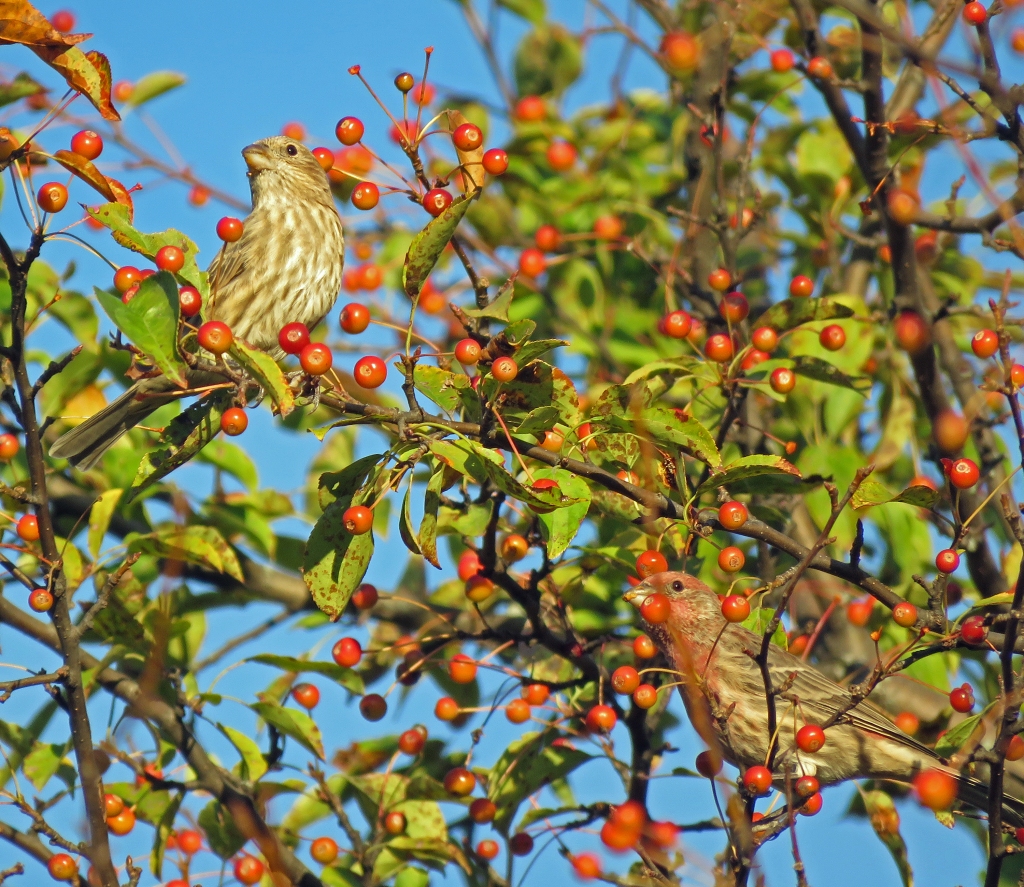
This American Robin was eating ripe fruit by the tennis courts.
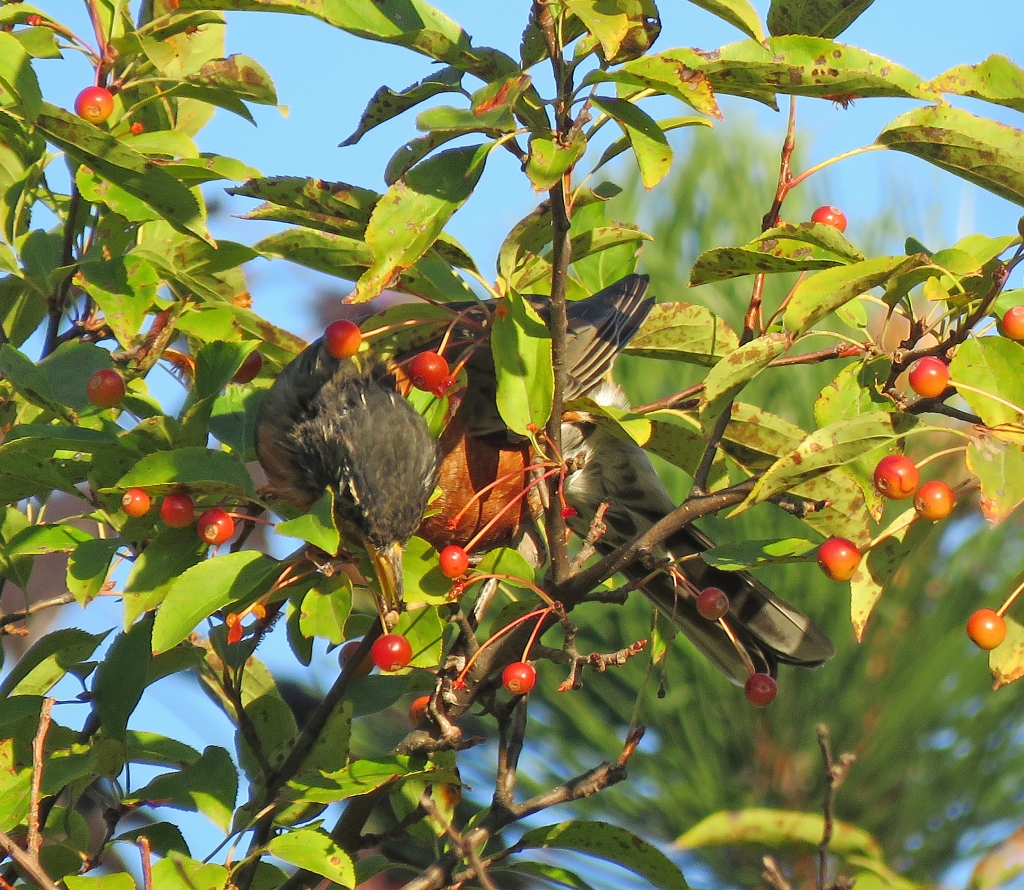
And, late in October, these Cedar Waxwings were resting in a tree east of the restroom building. They had just eaten a large meal of bright red fruit.
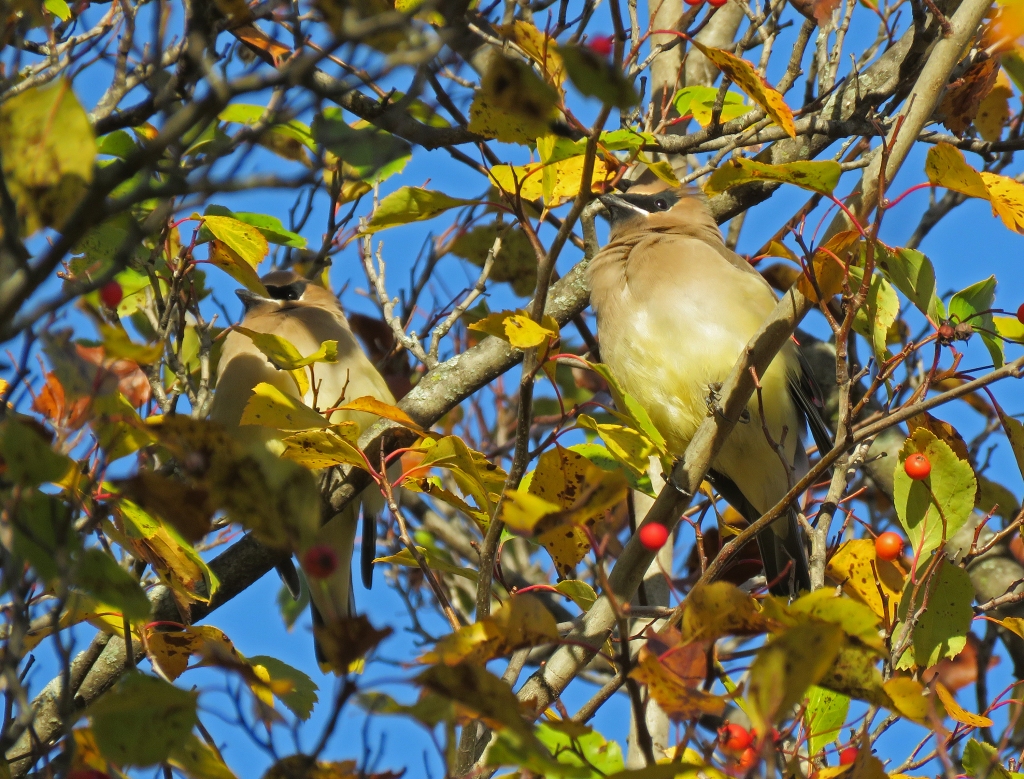
The park’s lawns held more than worms for robins. This Palm Warbler was finding tiny insects on the Taylor Park soccer field in early October. Energy from insects helped power its southward migration.

And in late October, once the morning frost had melted in the bright sun, this Yellow-rumped Warbler hopped onto the soccer field, looking for tiny insects. Now the warbler is holding its latest catch in its beak.
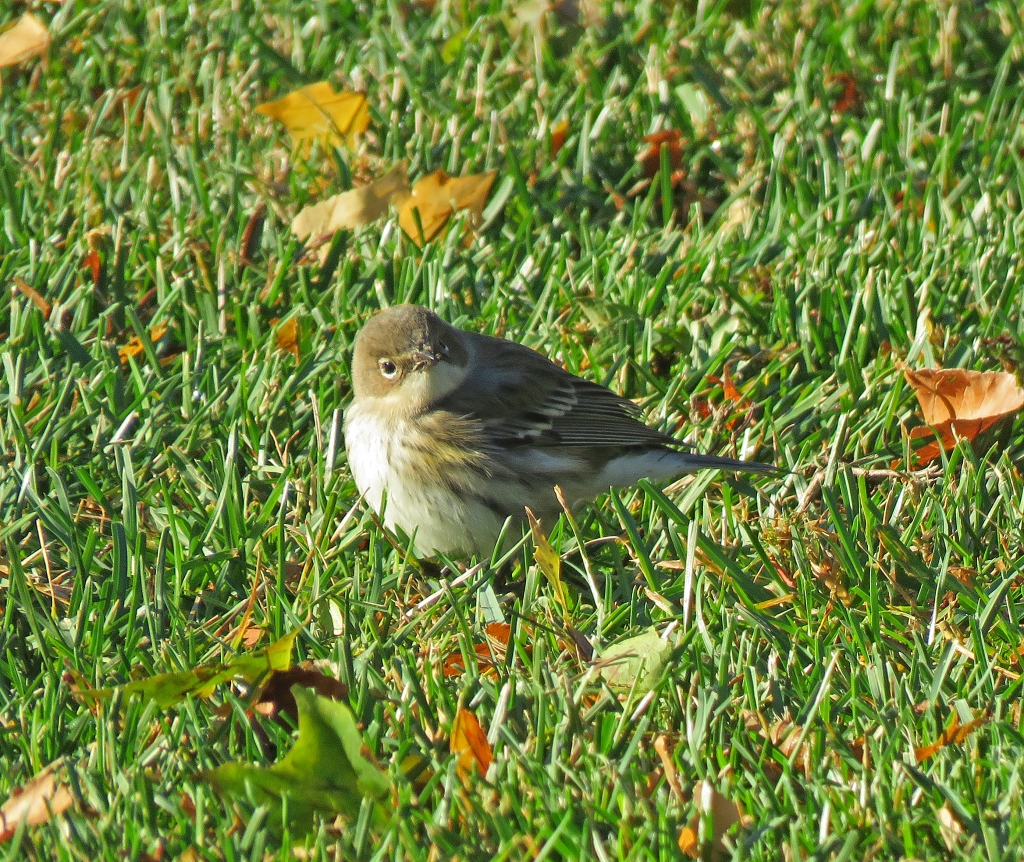
Taylor Park’s native trees also provided insects for migrating birds. This Blackpoll Warbler was busy hunting insects in an oak.
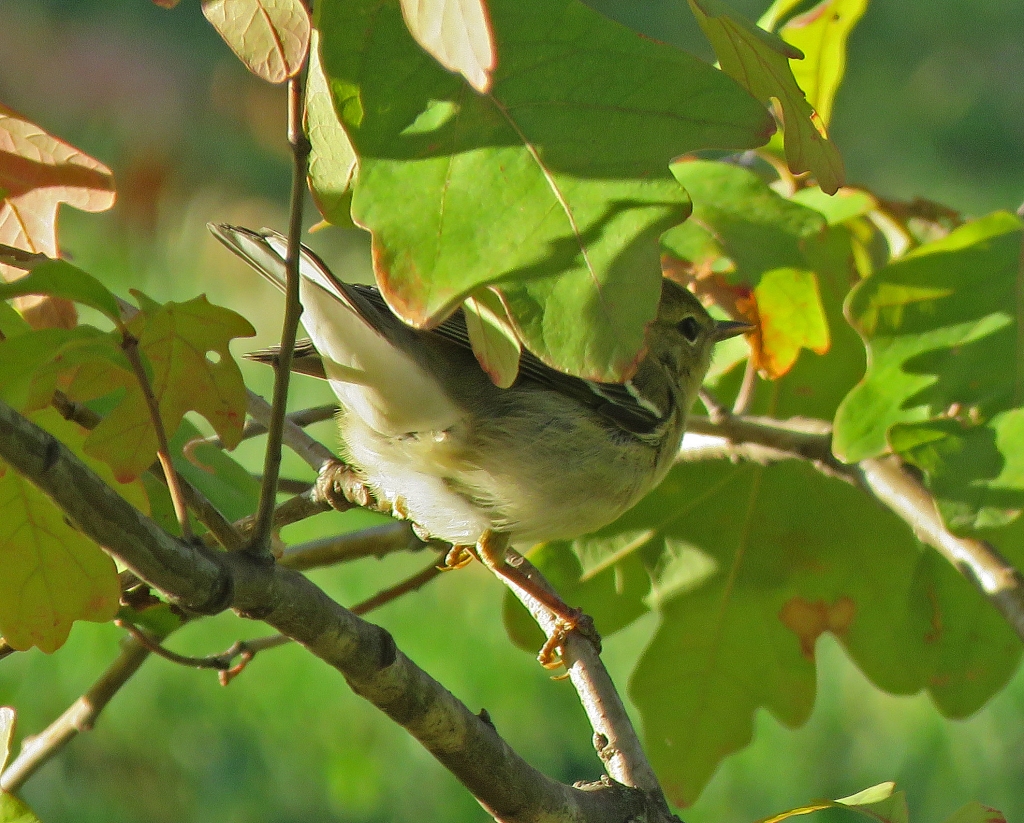
And this Ruby-crowned Kinglet also found insects in the park’s trees.

This Red-bellied Woodpecker also stopped by to eat Taylor Park insects, digging them out of dead wood on one of the park’s trees.

Black-capped Chickadees also visited Taylor Park to pick tiny insects off twigs and branches. Chickadees can switch to backyard bird feeders when the weather gets cold, which helps them make it through the winter.
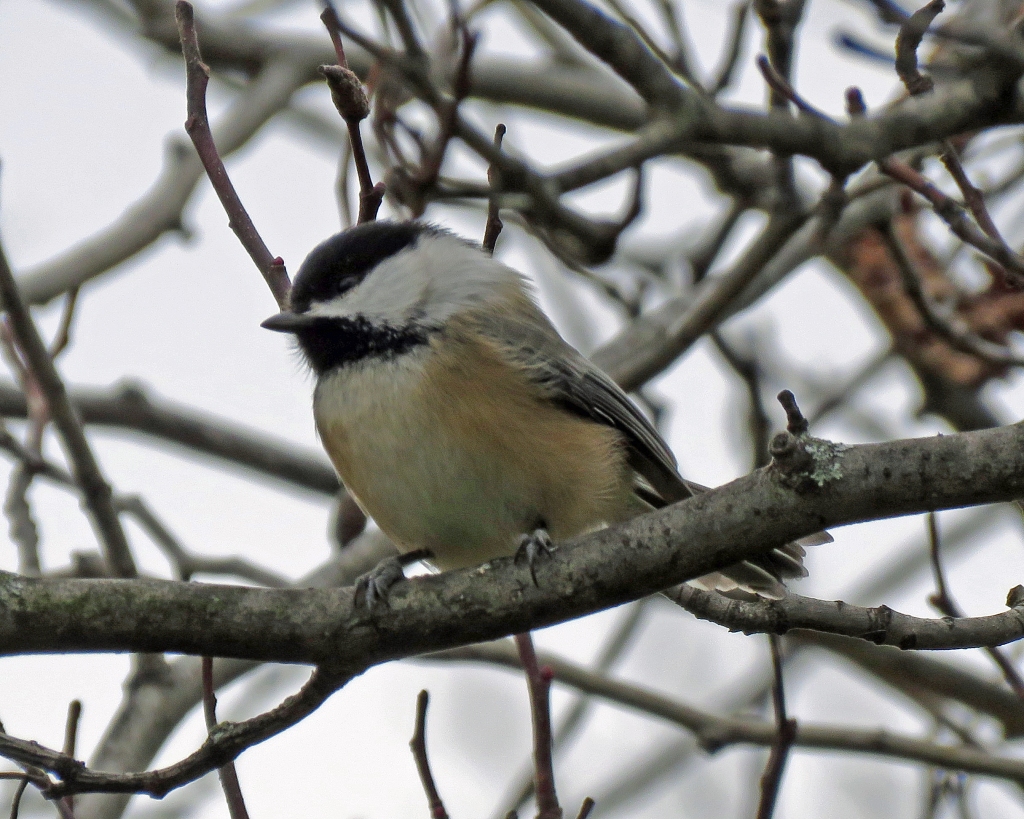
Many hawks migrate through our area each fall. This young Red-shouldered Hawk was spotted at the west edge of the park during mid October. It was 108th species recorded on Taylor Park’s eBird page.
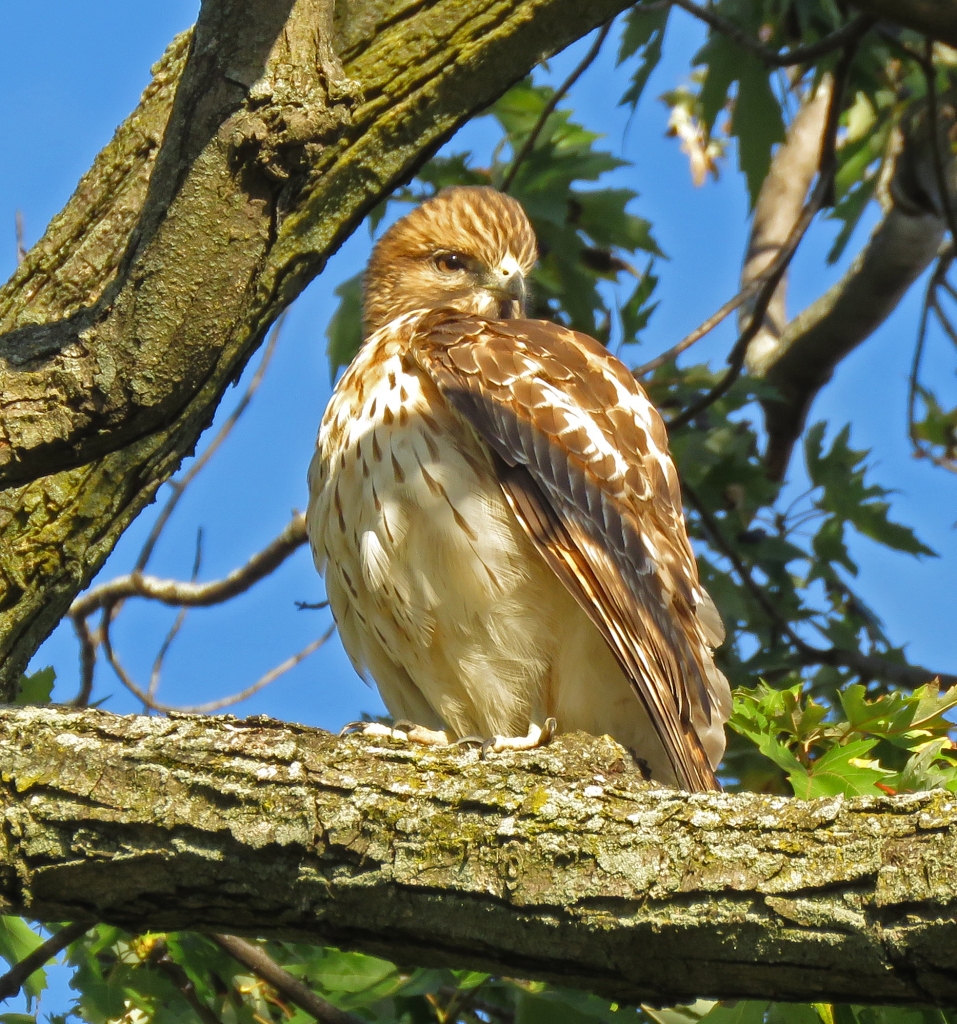
Turning to seed-eating birds, this Pine Siskin posed in a small tree near the playground. Pine Siskins migrated through our area in large numbers last fall, because there were not enough conifer seeds for them up north.
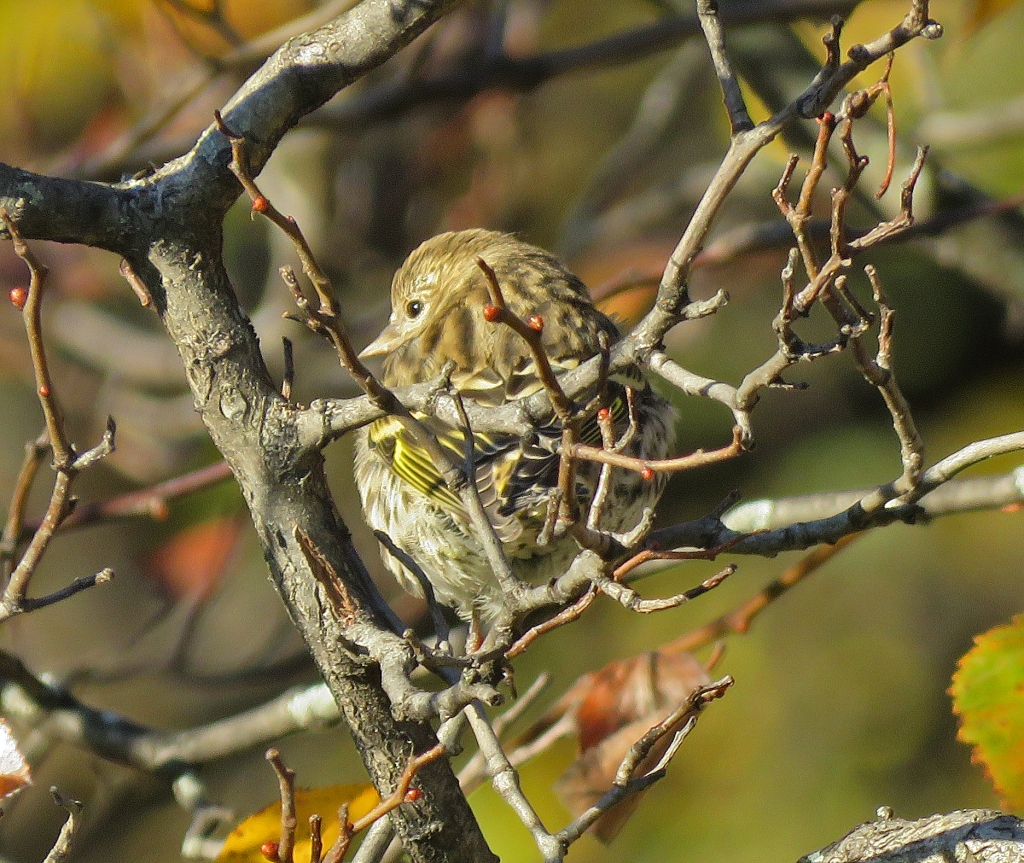
Many migrating sparrows stopped by to eat Taylor Park seeds last fall, including this Savannah Sparrow, perched on the wetland fence.
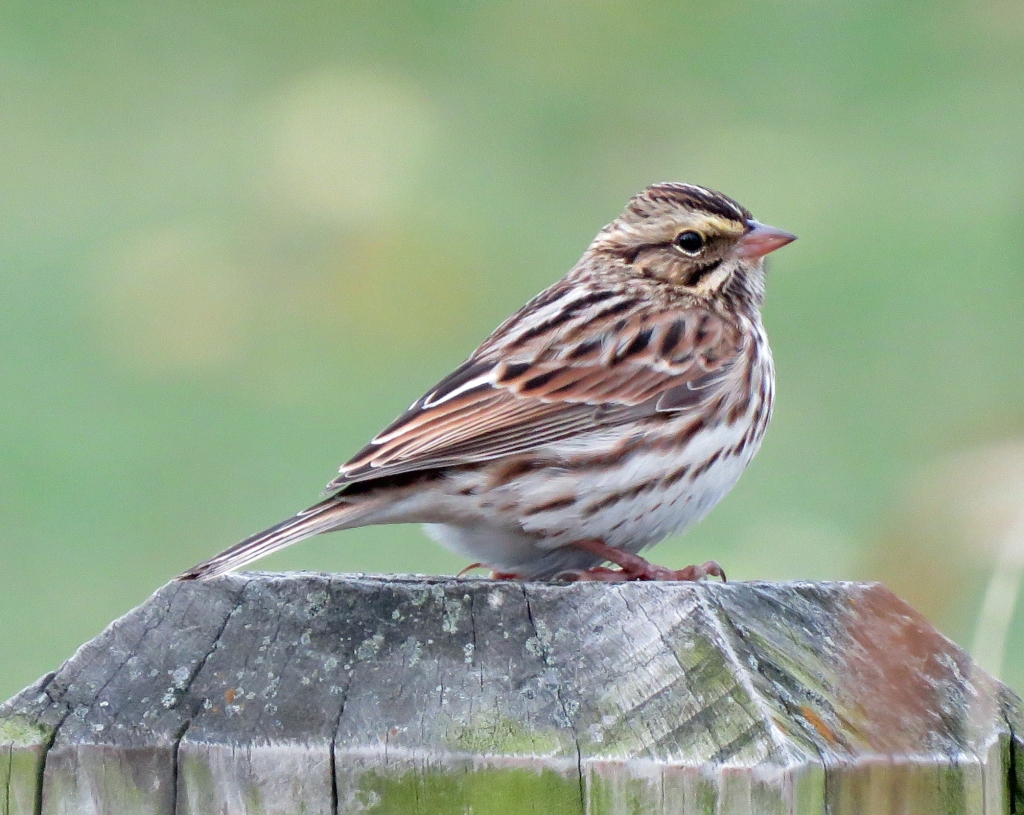
Remember Taylor Park’s first special visitor back in January 2020? Another Yellow-bellied Sapsucker stopped by the park in late November, this time drilling into a pine tree near the southeast corner of the park.
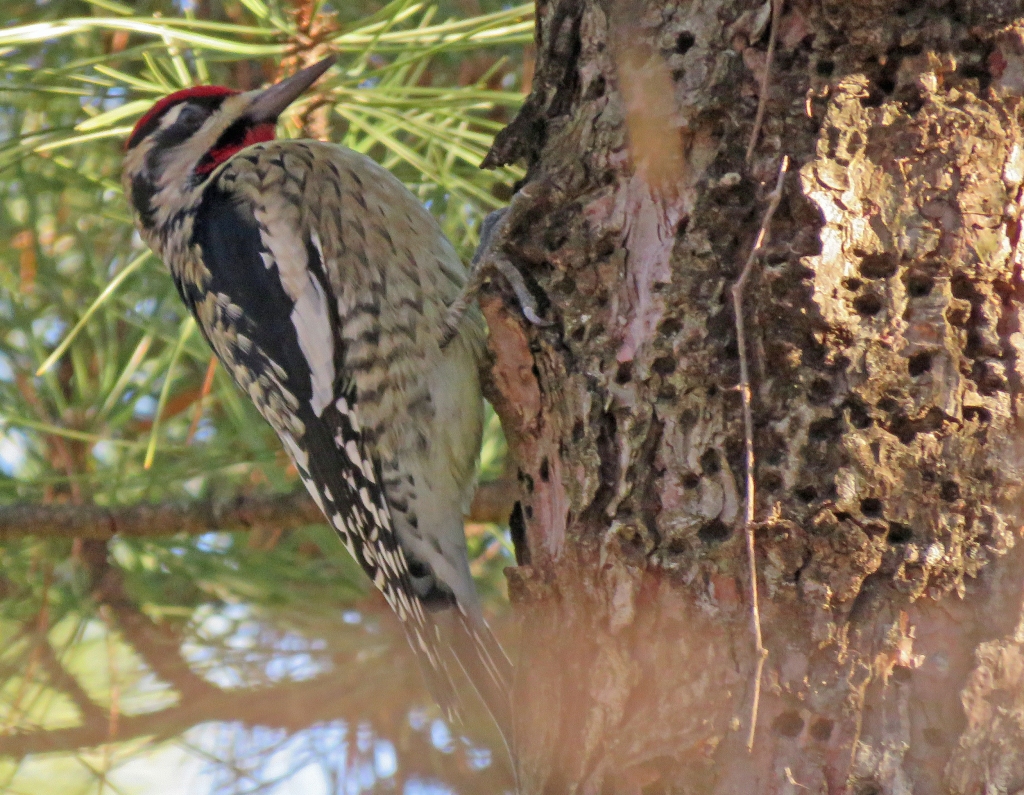
This American Robin could still find fruit on Taylor Park trees in December of last year, which helps bring us full circle. During 2021, Taylor Park will attract most of bird species recorded in this 2020 year-in-review, but I’m sure the coming year also will include some bird surprises. If all goes well, I will share my sightings this coming year, as I did in 2020.
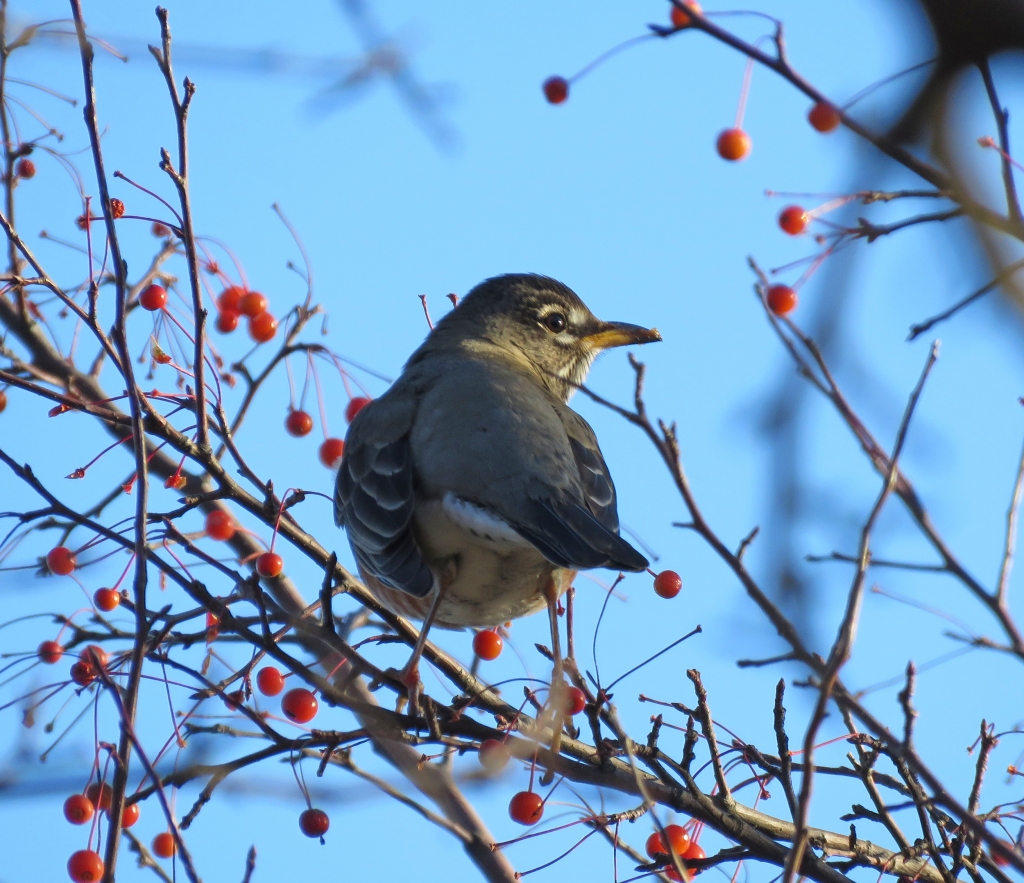
+ + + + + + + + + +
+ + + + + + +
+ + + +